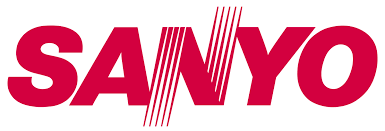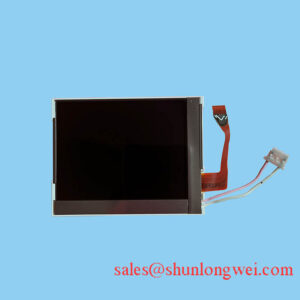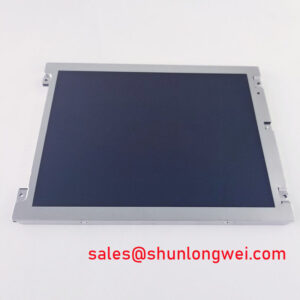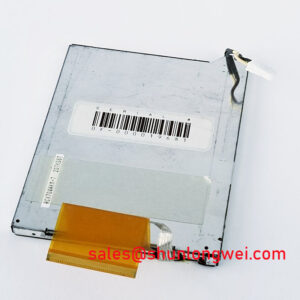https://en.wikipedia.org/wiki/Sanyo
Sanyo Electric Co., Ltd. (三洋電機株式会社 San'yō Denki Kabushiki-gaisha) (stylized as SANYO) was a Japanese major electronics company and formerly a member of the Fortune Global 500 whose headquarters was located in Moriguchi, Osaka prefecture, Japan. Sanyo had over 230 subsidiaries and affiliates. Sanyo was founded by Toshio Iue.
On December 21, 2009, Panasonic completed a 400 billion yen ($4.5 billion) acquisition of a 50.2% stake in Sanyo, making Sanyo a subsidiary of Panasonic. In April 2011, Sanyo became a wholly owned subsidiary of Panasonic.
History
Beginnings
Transistor radio, model 8S-P3, released in 1959
Sanyo was founded when Toshio Iue (井植 歳男 Iue Toshio, 1902–1969), the brother-in-law of Konosuke Matsushita and also a former Matsushita employee, was lent an unused Matsushita plant in 1947 and used it to make bicycle generator lamps. Sanyo was incorporated in 1949; in 1952 it made Japan's first plastic radio and in 1954 Japan's first pulsator-type washing machine. The company's name means three oceans in Japanese, referring to the founder's ambition to sell their products worldwide, across the Atlantic, Pacific, and Indian oceans.
This ambition was realized in the late 1970s, when Sanyo introduced car stereos and home electronics to the North American consumer market and embarked on a heavy television-based advertising campaign. Sanyo expanded their North American presence with the purchase of Whirlpool Corporation's television business, Warwick Electronics, which manufactured televisions for Sears.
In 1982, Sanyo started selling the MBC-1000 series of CP/M computers.In 1983 it introduced the MBC-550 PC, the lowest-cost IBM PC compatible personal computer available at the time, but its lack of full compatibility drove Sanyo from the market and no follow-on models were released.
1990s corporate culture
An article on “Sanyo Style” written in 1992 described that Sanyo utilizes an extensive socialization process for new employees, so that they will be acclimatized to Sanyo's corporate culture. New employees take a five-month course during which they eat together and sleep together in accommodation. They learn everything from basic job requirements to company expectations for personal grooming and the appropriate way in which to dress for their co-workers and superiors.
Technologically Sanyo has had good ties with Sony, supporting the Betamax video format from invention until the mid-1980s (the best selling video recorder in the UK in 1983 was the Sanyo VTC5000), while producing the VHS video format at the same time for the Fisher brand during the early 1980s, and later being an early adopter of the highly successful Video8 camcorder format. More recently, though, Sanyo decided against supporting Sony's format, the Blu-ray Disc, and instead gave its backing to Toshiba's HD DVD. This was ultimately unsuccessful, however, as Sony's Blu-ray triumphed.
In North America, Sanyo manufactured CDMA cellular phones exclusively for Sprint's Sprint PCS brand in the United States, and for Bell Mobility in Canada.
Acquisition
The 2004 Chūetsu earthquake severely damaged Sanyo's semiconductor plant and as a result Sanyo recorded a huge financial loss for that year. The 2005 fiscal year financial results saw a 205 billion yen net income loss. The same year the company announced a restructuring plan called the Sanyo Evolution Project, launching a new corporate vision to make the corporation into an environmental company, plowing investment into strong products like rechargeable batteries, solar photovoltaics, air conditioning, hybrid car batteries and key consumer electronics such as the Xacti camera, projectors and mobile phones.
Sanyo posted signs of recovery after the announcement of positive operating income of 2.6 billion yen. Sanyo remains the world number one producer of rechargeable batteries. Recent product innovations in this area include the Eneloop Low self-discharge NiMH battery, a “hybrid” rechargeable NiMH (Nickel-metal hydride battery) which, unlike typical NiMH cells, can be used from-the-package without an initial recharge cycle and retain a charge significantly longer than batteries using standard NiMH battery design. The Eneloop line competes against similar products such as Rayovac's “Hybrid Rechargeable” line.
On November 24, 2006, Sanyo announced heavy losses and job cuts.
Tomoyo Nonaka, a former NHK anchorwoman who was appointed Chairman of the company, stepped down in March 2007. The President, Toshimasa Iue, also stepped down in April of that year; Seiichiro Sano was appointed to head the company effective April 2007. In October 2007, Sanyo cancelled a 110 billion yen ( million) sale of its semiconductor business, blaming the global credit crisis for the decision and stating that after exploring its other options, it had decided to keep the business and develop it as part of its portfolio.
In 2008, Sanyo's mobile phone division was acquired by Kyocera.
On November 2, 2008, Sanyo and Panasonic announced that they have agreed on the main points of a proposed buyout that would make Sanyo a subsidiary of Panasonic and a formal announcement of the acquisition was made on Sanyo's web site on December 19, 2008. They became a subsidiary of Panasonic on December 21, 2009.
In 2010, Sanyo sold its semiconductor operations to ON Semiconductor.
On July 29, 2010, Panasonic reached an agreement to acquire the remaining shares of Panasonic Electric Works and Sanyo shares for $9.4 billion.
By March 2012, parent company Panasonic plans to terminate the Sanyo brand, however it will remain on some of the products where the Sanyo brand still holds value to consumers.
In August 2013, a 51% majority stake in Chinese company Hefei Royalstar Sanyo, a 2000 joint venture between Japanese Sanyo and Chinese government investment company Hefei, was purchased by American multinational manufacturer Whirlpool Corporation for $552 million.
Rechargeable batteries
Sanyo pioneered the production of nickel cadmium batteries in 1964, nickel metal hydride batteries in 1990, lithium ion batteries in 1994, and lithium polymer batteries in 1999. Sanyo is notable for their Eneloop brand of NiMh batteries that can be recharged thousands of times. In 2000, it acquired Toshiba's nickel metal hydride battery business, including the Takasaki factory. Since the acquisition of Sanyo by Panasonic the Takasaki factory transferred ownership to FDK TWICELL CO., LTD.
Electric vehicle batteries
Sanyo Electric Co Ltd. supplies nickel metal hydride batteries (NiMH) to Honda Motor Co. Ltd., Ford Motor Co. and Volkswagen. Sanyo is developing NiMH batteries for hybrid electric vehicles with the Volkswagen group. Sanyo lithium-ion batteries for Plug-in HEV will also be housed in SUZUKI's fleet vehicles.
Sanyo Electric plans to raise monthly production of NiMH batteries for hybrid vehicles from the current 1 million units to up to 2.5 million by the end of fiscal 2005.
Pre:Toshiba
Next:Samsung
[banner group='banner-group']




